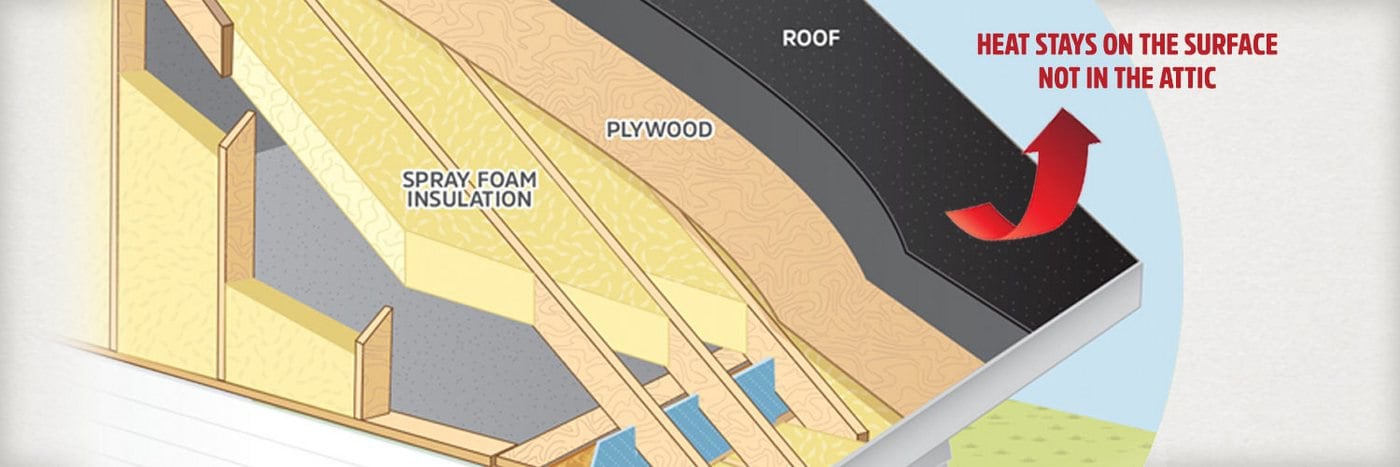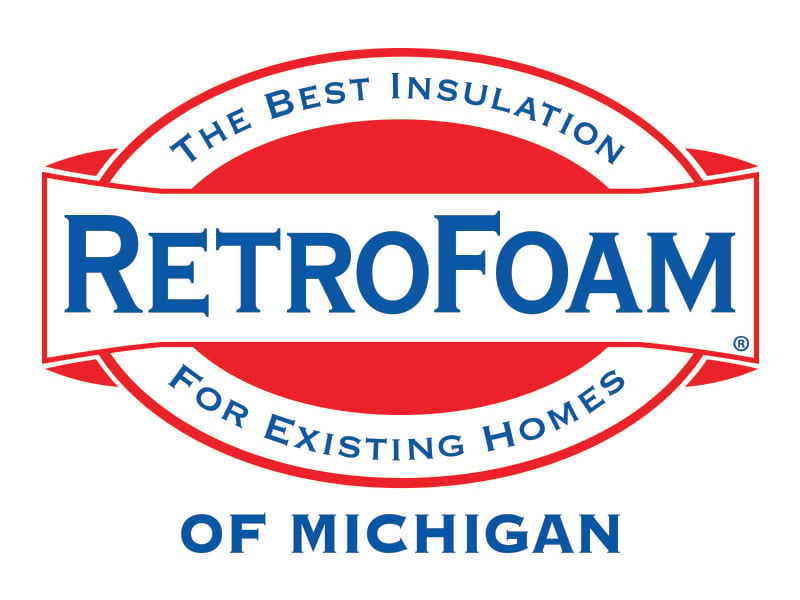Does My Roof Need to Breathe?


While researching insulating an attic with spray foam insulation, you may have seen that it is essential for the roof of your home to breathe.
Well, that’s not necessarily correct.
RetroFoam of Michigan has more than 20 years of experience insulating thousands of attics across the Lower Peninsula. With that experience comes the knowledge of how to insulate an attic in a way that keeps your home comfortable and running more energy efficiently while saving you money.
Here's everything you need to know about spray foam attic insulation and how it affects your roof.
Insulating an Attic Roof or Floor with Spray Foam
When it comes to insulating an attic, you essentially have two main options -- applying spray foam to the attic roof deck or the attic flat or floor.
Applying spray foam insulation to the attic roof incorporates this area into your home's conditioned space. This means that the air from your living areas will ascend to the attic, encounter the spray foam air barrier, and then recirculate back into the living spaces, maintaining a more consistent indoor temperature.
Alternatively, insulating the attic flat with spray foam creates a distinct separation from the rest of your home. This method effectively prevents the air you heat or cool from escaping through the attic, ensuring your HVAC system works more efficiently and your home remains more comfortable.
The choice between these installation methods also influences how air moves in your attic space. It's important to select the option that best aligns with your home's design and your energy efficiency goals.
Unvented Attic System
When opting for an unvented attic system, your insulation contractor applies spray foam directly onto the house's roof deck.
There's a common misconception that this approach might lead to what's known as a "hot roof" or impede the roof's ability to "breathe." However, the idea that a roof needs traditional ventilation to "breathe" is a misconception.
Originally, attic ventilation served primarily to expel moisture that made its way into the attic through small openings in the roof deck. By applying spray foam insulation across the entire roof deck, these gaps are sealed, reducing the pathways for moisture entry. Because the attic becomes part of the conditioned space, traditional attic ventilation like ridge and soffit vents is no longer necessary.
That said, a conditioned attic still benefits from proper air circulation. If the home's building envelope isn't fully sealed, or if appliances like bathroom fans or stove hoods vent directly into the attic, humidity can build up. In these cases, mechanical air movement -- such as HVAC supply or return vents, or a humidity-sensing fan -- can help maintain healthy moisture levels.
Concerns about creating a "hot roof" are largely unfounded. Spray foam insulation doesn't act as a heat source, and while it may raise the temperature of shingles slightly, it's not enough to cause damage when installed correctly.
Vented Attic System
In some cases, it makes more sense and is more beneficial to insulate the floor of the attic instead of the roof deck.
This is considered a vented system.
When you insulate the floor of the attic with spray foam, you cut that space off from the rest of the house, creating an air seal. Because this space is now separate, it needs outside air brought in through vents to help control temperature and moisture. This is typically done with working soffit vents (with baffles) and ridge vents to allow continuous airflow.
The challenge with this system is that temperature differences between the attic and the rest of the home can cause condensation, which promotes mold and mildew growth. Maintaining proper vent function and airflow is critical for this system to work effectively.
Learning More About the Benefits of Spray Foam Insulation
Now that we've cleared up that your roof doesn't actually need to breathe, you might be yearning to learn more about spray foam insulation for other areas of your home.
If that's the case, check out our foam insulation Learning Center. You'll find a ton of great resources there, as well as answers to the most frequently asked questions.
Related Articles
Clearing Up Misconceptions About Spray Foam Insulation
Does Spray Foam Damage Roof Shingles?
Vented vs. Unvented Attic: Which is Better?
Save
About Amanda Emery
Amanda previously has worked as a breaking news and crime reporter, TV news producer, and editor in Flint and Detroit. Throughout her career as a journalist, she has won several awards from The Society of Professional Journalists - Detroit Chapter and the Michigan Press Association. As part of the RetroFoam of Michigan family, Amanda uses her experience as a journalist to write content that will help educate homeowners on the benefits of foam insulation. When Amanda isn’t writing, she’s spending time with her husband and rescued huskies. She also loves knitting, making art, cooking, and hosting dinner and a movie night for friends and family.


